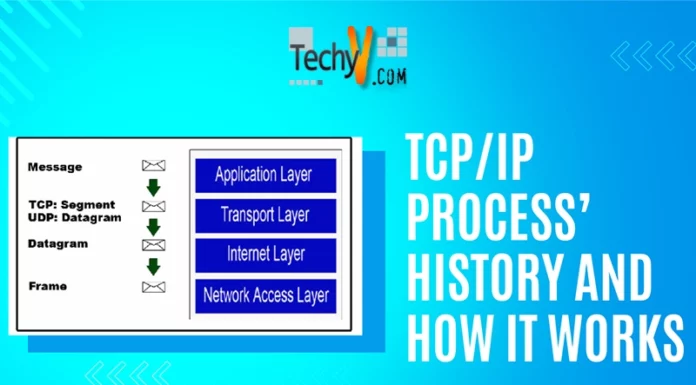Wi-Max versus WiFi
The human society has been divided into different ages and eras depending upon the different types of advancements, progress, and developmental stages of evolution through which it has passed during the course of the history.
The Paleolithic era, the Neolithic era, the stone age, the industrial revolution and the invention of steam engines, the modern times and now the post-modern contemporary times. However talking and discussing about the technological changes; in fact the birth of technology more specifically, the age of Information and Communication Technology (ICT) is characterized by the historians to have started in 1981. In 1981 International Business Machines (IBM) introduced there first table top or desktop computers (or PC to be more precise), in the market.
This was the breakthrough point when technological advancements geared up and then within no time Internet, new and latest versions of personal computers, new soft-wares, cell-phone and mobile technologies, laptops, palm tops, PDAs, androids and the wireless technologies for sending and receiving messages at distant places became popular. In past, pigeons were used to carry out messages from one place to another distant place, but the arrival of internet and then the completely wireless technologies that does not require any copper wires, optic cables or optic fibers became popular. Rather it would be better to put it this way, “If pigeons happen to belong to the olden times; the wireless technologies happen to be the pigeon of the contemporary era of globalization and ICT.”
Both the Wi-Fi and Wi-Max are examples of wireless broadband technologies that provide a broader and wider range o internet connection at a very higher speed compared to the traditional primitive forms of internet technologies. These two technologies are growing at a very faster pace due to the benefits associated with both of these technologies. However, the question that arises in first place is that what is the primary difference between the two technologies? Which one should be preferred over the other? Or in other words simply what are the benefits and advantages of using a Wi-Max technology and are the pros and cons of Wi-Fi technology?
Wi-Fi was introduced in Norway for the first time in 1991 designed for commercial registration of cash however Wi-Max or Worldwide Interoperability for Microwave Access is a new name in the broadband technologies. Most of the people, without thinking and pondering upon the point, say that Wimax happens to be better than the Wi-Fi. If posed with the question that why do they think so, most of them simply come up with the answers that as Wi-Max happen to be a more latest technology than the Wi-Fi therefore it is better. In other words the people are of are just making a hypothetical notion in their minds based on false assumption that, “the Wi-Max being designed after the Wi-Fi technology would certainly have certain advanced technologies and features that the telecom scientist has embedded in its design.”The real truth is that the answer to the question that whether the Wi-Max is better or Wi-Fi is simply user oriented.
It would be better to understand the basic difference between the two technologies; the only difference is that WiFi is for small range hotspots at a shorter distance while Wi-Max is for long range hotspots, back hauls and terminals. Therefore, most of the time home users use Wi-Fi which goes pretty well for them. The WiFi or Wi-Max connection should not mean any difference to a person sitting at home doing his work or a student using internet connection in the university by connecting to the wireless router installed in his university/school. However, for an internet service provider there is a huge difference between a Wi-Fi and a Wi-Max. The long-range coverage feature of the Wi-Max, that also differentiates it from other wireless technology, gives it an edge over others and makes it a more favorable option for the internet service providers.
It can thus clearly be concluded that both the technologies happen to be useful but as the technical executions of both is far different that is why the target audience, customers to be more precise in business terms, is also different. Both the technologies have widespread, excellent, and great application services if the correct type of target audience has acquired them. For example if an internet service provider which was previously providing internet connections to its customers via the use of Ethernet cables, and it want to make use of the wireless broadband technology.
Obviously, a WiFi, which merely have arrange of 150 feet or 100 meters approximately, would be completely useless to the Internet service provider. He should go for a Wi-Max connection.
If a person is sitting at his home wants to have a wireless connection for using internet etc and he opts for a Wi-Max connection then its going to be very costly for him in the first place. In the second place if he can work well with a Wi-Fi connection then what is the need for acquiring Wi-Max? But perhaps the answer to this question lays in the quality of the Wi-max and WiFi connection. However, the difference is not very significant. but still while using a WiFi connection, many users are at the same time accessing the same terminal due to which time delays are caused and the connection becomes slow. However, this is not the case with the Wi-Max technologies where individual user has individual terminals to be accessed.
The only shortfall associated with the Wi-Max however is that currently the businesses that are already into providing internet services to the localities on smaller scale happen to have a well-developed system and they would have to incur high expenses in replacing their internet technology with the Wi-Max broadband technologies. However, Wi-Max connections may go well and have a high success rate in the form of governmental and big corporations moving towards more state of the art technologies in terms of trying to improve their goodwill in the business and world over.

















